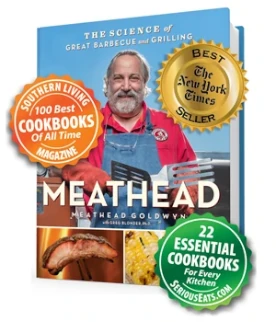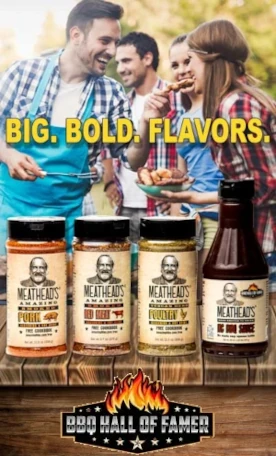Last night I did my second cook on the WSC - pizza. The result was a series of pizzas like the one below: neither beautiful nor photogenic. To be honest, some of the others did look slightly better, but we were focused on feeding the masses rather than on taking the best photos. Still, they tasted great and the cooker performed well, as described below.

Lighting
Initially I set up the cooker with the Slow 'N Sear Low Profile, because I thought I might be doing some sausages, but eventually that didn't happen. Advice for other new WSC/SnS owners: to light the SnS I found it easier to put a small number of briquettes in a chimney and put the chimney over the Snap Jet, then transfer the lit briquettes into a corner of the SnS before filling the rest of the SnS with unlit fuel.
If you put the briquettes in the SnS on the grate over the Snap Jet, the gap between the flame and the briquettes appears to be too large. It might eventually ignite them, but I waited about 15 minutes with no real sign of ignition. Maybe I'm just doing it wrong. David Parrish, do you have any tips for us regarding this?
Walk
On that note, I again had a slight run away with the WSC to 248° F, but I was able to bring it back down to below 230 quite easily. I left it at 225 and went for a walk in the hills behind the house with some friends and family. When I came back 90 minutes later it was at 223. And an hour after that it was 222, without any tending of the fire, so it holds temperatures well. When I looked inside, the lit briquettes still occupied just the one corner of the SnS and I'm sure that would easily have lasted many more hours without refilling. (I'm really looking forward to using the SnS in anger.)
So, with the pizzas prepared, I pulled everything out except the lower grate, poured in the lit briquettes from the SnS, added some more Australian heat beads (I should have used the Weber scoop to get into the habit of measuring, but I forgot), put on the diffuser, then the top grate, then a large stone floor tile. I have a pizza steel on order, but that will not come until next week.
Open 'er up
Then I basically opened everything wide and stepped back. 30-40 minutes later it was at 600 and still rising. I forgot to check the temperature of the tile with the infrared thermometer but we took an optimistic view and threw the pizza onto the stone with cheerful recklessness (by this point we had enjoyed a few glasses of high-quality Spanish red and our tolerance for high-risk grilling had increased accordingly).
I think we did 6 pies in total, one after the other, to feed 8 people. The routine the wife and I developed was for her to bring the pizza on a flat tray on a piece of baking paper, then I would open the lid, slide the pizza on its paper across onto the tile and close the lid again, about 3 seconds. We then gave it 6 minutes or so, and in a couple of cases another two minutes just in case. During this time, the WSC temperature gauge was apparently fixed immovably to 550° F. If it lost any heat during the lid openings, it made it up very quickly.
The result was very crispy pizza, again, noticeably better than oven-cooked. Everything got eaten. On the whole, given that this was only our second go on the WSC, and that we did not tweak our existing recipe to suit this approach to cooking pizzas, and given that the tile on which we were cooking was pretty thin, it was an impressive performance. I think we may want to have a look at the dough and experiment with changing that. I would also like more of a wood-fired taste, so that's another thing to think about. Perhaps a higher temperature?
Shutdown
Incidentally, we then went out into the field by the house to light a bonfire and set off some fireworks (basically we held Guy Fawkes night a day early) so I closed down the cooker. I came back to the house about 40 minutes later to get something and the WSC was down to 300° F, and an hour later it seemed to be completely out. It is, as promised, responsive.
Next cook, probably not before next weekend, will likely be a leg of lamb adapted from Meathead's recipe.
Lighting
Initially I set up the cooker with the Slow 'N Sear Low Profile, because I thought I might be doing some sausages, but eventually that didn't happen. Advice for other new WSC/SnS owners: to light the SnS I found it easier to put a small number of briquettes in a chimney and put the chimney over the Snap Jet, then transfer the lit briquettes into a corner of the SnS before filling the rest of the SnS with unlit fuel.
If you put the briquettes in the SnS on the grate over the Snap Jet, the gap between the flame and the briquettes appears to be too large. It might eventually ignite them, but I waited about 15 minutes with no real sign of ignition. Maybe I'm just doing it wrong. David Parrish, do you have any tips for us regarding this?
Walk
On that note, I again had a slight run away with the WSC to 248° F, but I was able to bring it back down to below 230 quite easily. I left it at 225 and went for a walk in the hills behind the house with some friends and family. When I came back 90 minutes later it was at 223. And an hour after that it was 222, without any tending of the fire, so it holds temperatures well. When I looked inside, the lit briquettes still occupied just the one corner of the SnS and I'm sure that would easily have lasted many more hours without refilling. (I'm really looking forward to using the SnS in anger.)
So, with the pizzas prepared, I pulled everything out except the lower grate, poured in the lit briquettes from the SnS, added some more Australian heat beads (I should have used the Weber scoop to get into the habit of measuring, but I forgot), put on the diffuser, then the top grate, then a large stone floor tile. I have a pizza steel on order, but that will not come until next week.
Open 'er up
Then I basically opened everything wide and stepped back. 30-40 minutes later it was at 600 and still rising. I forgot to check the temperature of the tile with the infrared thermometer but we took an optimistic view and threw the pizza onto the stone with cheerful recklessness (by this point we had enjoyed a few glasses of high-quality Spanish red and our tolerance for high-risk grilling had increased accordingly).
I think we did 6 pies in total, one after the other, to feed 8 people. The routine the wife and I developed was for her to bring the pizza on a flat tray on a piece of baking paper, then I would open the lid, slide the pizza on its paper across onto the tile and close the lid again, about 3 seconds. We then gave it 6 minutes or so, and in a couple of cases another two minutes just in case. During this time, the WSC temperature gauge was apparently fixed immovably to 550° F. If it lost any heat during the lid openings, it made it up very quickly.
The result was very crispy pizza, again, noticeably better than oven-cooked. Everything got eaten. On the whole, given that this was only our second go on the WSC, and that we did not tweak our existing recipe to suit this approach to cooking pizzas, and given that the tile on which we were cooking was pretty thin, it was an impressive performance. I think we may want to have a look at the dough and experiment with changing that. I would also like more of a wood-fired taste, so that's another thing to think about. Perhaps a higher temperature?
Shutdown
Incidentally, we then went out into the field by the house to light a bonfire and set off some fireworks (basically we held Guy Fawkes night a day early) so I closed down the cooker. I came back to the house about 40 minutes later to get something and the WSC was down to 300° F, and an hour later it seemed to be completely out. It is, as promised, responsive.
Next cook, probably not before next weekend, will likely be a leg of lamb adapted from Meathead's recipe.









Comment